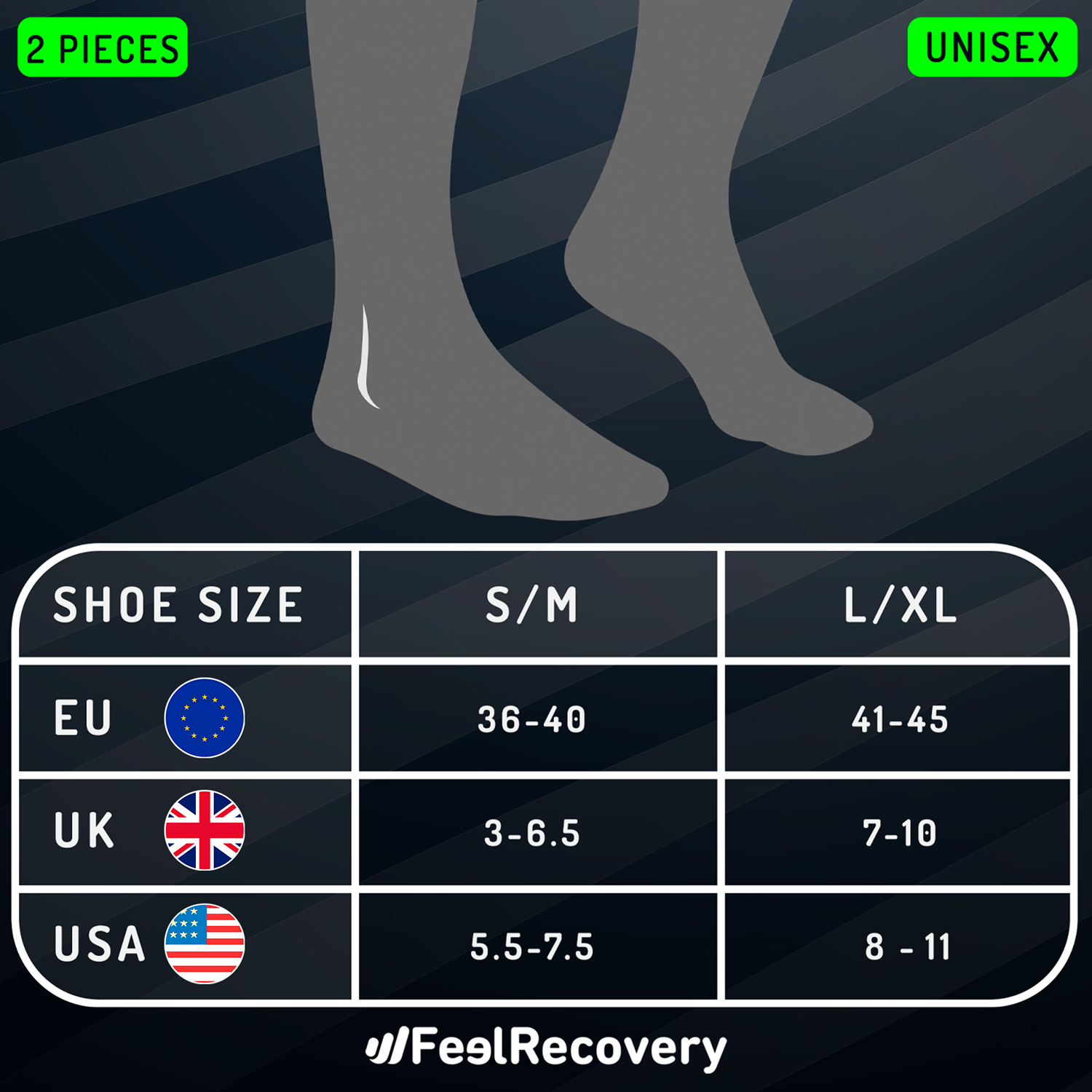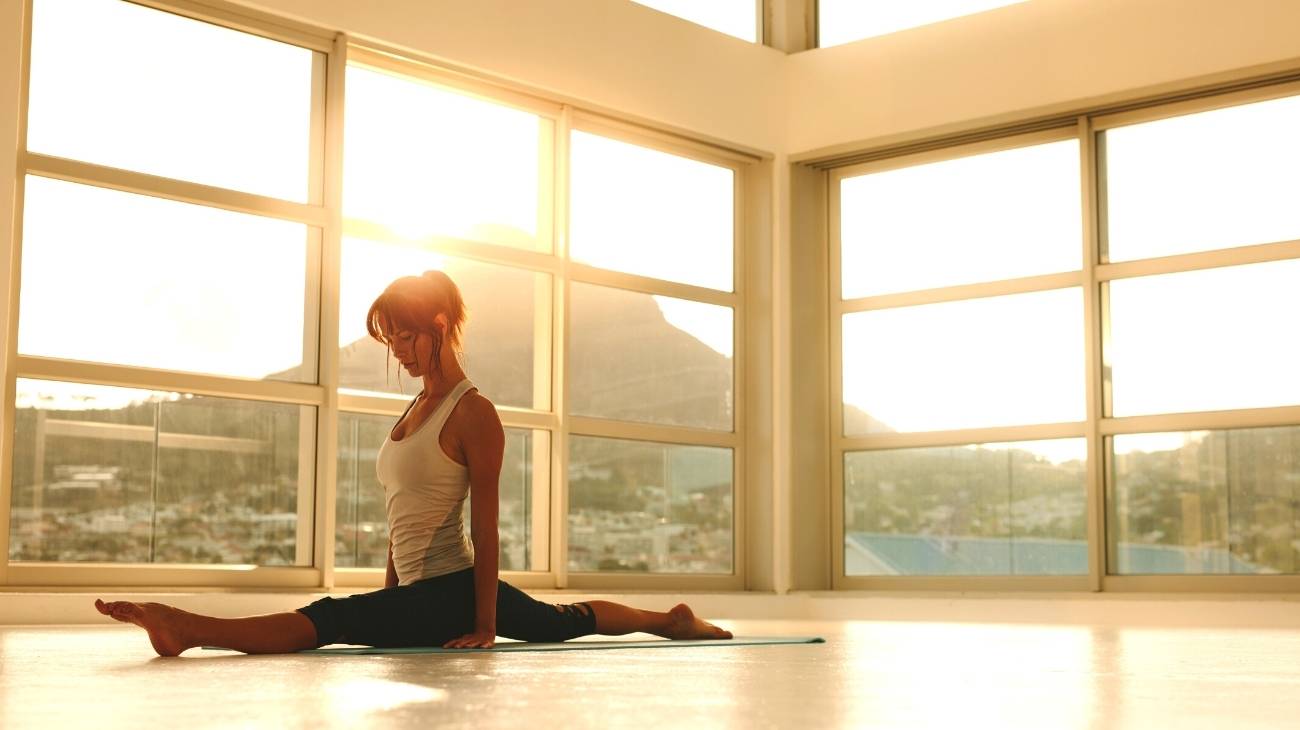Doing yoga brings many health and mental benefits, from flexibility and mindfulness to increased muscle strength. However, it is becoming increasingly common for beginner yogis to practice risky postures too soon, ending up with ankle or foot injuries in yoga.
Below, we will tell you about the most common ankle injuries when doing yoga, and how to treat them with the RICE therapy. We'll also tell you about the best products to promote recovery. Take a look and find out more:
What are the most common types of ankle injuries when doing Yoga?
The popularity of yoga is increasing as yoga-related injuries, including ankle injuries, are on the rise. Some of these injuries occur in patterns, especially in high-risk asanas. This is because the practitioner moves into vigorous poses too quickly without considering the limitations of his or her own body; this is the main risk factor.
Also, when the yogi does the same posture over and over again for a long period of time. This generates an overuse strain on the ankle, predisposing to injuries and musculoskeletal conditions. The worst thing is that often the symptoms do not appear immediately, so it is very difficult to associate the causality between the ankle injury and the practice of yoga.
It is therefore very appropriate to talk about the anatomy of the ankle before telling you about the different injuries that occur in it. The ankle is a lower limb surrounded by cartilage that cushions the joints while connecting, supporting and stabilising the bones.
Below, you will learn about the most common ankle injuries in yoga and under what conditions they occur:
Sprained ankle
Ankle sprains mostly occur in the lateral ligament external (LLE). Some asanas require sudden and risky movements of approximation and rotation of the foot, also known as hyperinversion. Thus, the elasticity of the ligament is exceeded, causing the injury.
In Grade I, a mild sprain is generated without ligament rupture, while Grade II is a partial ligament rupture. In Grade II sprain, the ligament is completely torn, both in the anterior and posterior peroneoastragal ligament. In all three cases it causes pain, tenderness and difficulty in movement, but in the most severe case it may cause inflammation, severe pain and bleeding.
Achilles tendon tear
Also known as Achilles tendinopathy, a tendon condition that impairs vascularisation, affects the tendon's reparative capacity and causes biomechanical irritation. In yogis, it is usually caused by the practice of postures that require excessive eccentric overloading of the triceps.
It is also caused by repetitive overloading. Some of the yoga postures that could cause ankle injuries are the One Legged King Pigeon, Warrior I, Lotus Pose and Hero Pose. The practitioner will experience a tearing sound, sharp pain, swelling near the heel and limited range of motion.
Ankle fracture
The precision required for asanas in yoga determines the position of the foot, ankle and knee. Therefore, an incorrect turn of the hip will leave an unstable leg, making it impossible to properly manage the support of the foot on the ground. Consequently, these forced movements of the foot in adduction, pronation, twisting, adduction and combined could result in an ankle fracture. Consequently, the practitioner will experience pain, abnormal motion and inability to walk. And, in the worst case, surgical treatment will be required.
Best products for the recovery of ankle and foot injuries in Yoga
Bestseller
-
2 Ankle Compression Sleeve (Black/Gray)
£17,50 -
2 Ankle Compression Sleeve (Green/Navy)
£17,50 -
2 Ankle Compression Sleeve (Pink/Bordeaux)
£17,50 -
Ice Pack for Foot - Cold Therapy Socks (Black)
£21,95 -
Ice Pack for Foot - Cold Therapy Socks (Green)
£21,95 -
Ice Pack for Foot - Cold Therapy Socks (Pink)
£21,95 -
Microwavable Heated Slippers (Hearts)
£21,50 -
Microwavable Heated Slippers (Oxford)
£21,50 -
Microwavable Heated Slippers (Sport)
£21,50 -
Microwaveable Wheat Bag for Pain Relief (Hearts)
£17,50 -
Microwaveable Wheat Bag for Pain Relief (Oxford)
£17,50 -
Microwaveable Wheat Bag for Pain Relief (Sport)
£17,50 -
Sport Compression Socks (1 Pair) (Black/Gray)
£17,50 -
Sport Compression Socks (1 Pair) (Green/Navy)
£17,50 -
Sport Compression Socks (1 Pair) (Pink/Bordeaux)
£17,50
How to apply the RICE therapy to treat ankle injuries in Yoga?
The RICE protocol has become popular over time as a first aid measure for treating yoga injuries. Especially in acute ankle injuries, it was conceived as the main treatment for this type of injury. However, a new update has incorporated "Protection" as part of the process, now called the PRICE protocol.
Below, we will explain the different phases of the PRICE therapy and how to apply them correctly to ankle injuries in yoga:
- Protection: Prevents the ankle injury from worsening or generating other types of injuries associated with it. Therefore, immediate cessation of all activity is required, requiring the use of crutches when walking.
- Rest: This phase is closely related to the previous one, as it combines cessation of activity with rest. This will prevent the injury from worsening, contributing to the healing process more effectively and quickly.
- Ice: During the first 72 hours after the injury, ice should be applied. This is to achieve a vasoconstrictor effect that avoids excessive inflammation and reduces the pain. Sessions of 5 to 15 minutes maximum are recommended, with rest intervals of 1 to 2 hours for 3 days.
- Compression: In this phase, a compressive bandage specially designed for ankles should be applied. This will prevent oedema formation and promote circulation.
- Elevation: Use pillows to elevate the ankle to the level of the heart while lying down. In this way, you will reduce blood flow.
References
- Bekhradi, A., Wong, D., Gerrie, B. J., McCulloch, P. C., Varner, K. E., Ellis, T. J., & Harris, J. D. (2018). Although the injury rate of yoga is low, nearly two-thirds of musculoskeletal injuries in yoga affect the lower extremity: a systematic review. Journal of ISAKOS, 3(4), 229-234. https://www.sciencedirect.com/science/article/pii/S2059775421002972
- Mears, S. C., Tackett, S. A., Elkins, M. C., Severin, A. C., Barnes, S. G., Mannen, E. M., & Martin, R. D. (2019). Ankle motion in common yoga poses. The Foot, 39, 55-59. https://www.sciencedirect.com/science/article/abs/pii/S0958259218301597
- Garrick, J. G., & Requa, R. K. (1988). The epidemiology of foot and ankle injuries in sports. Clinics in sports medicine, 7(1), 29-36. https://www.sciencedirect.com/science/article/abs/pii/S027859192030956X
- Kadel, N. J. (2006). Foot and ankle injuries in dance. Physical Medicine and Rehabilitation Clinics, 17(4), 813-826. https://www.pmr.theclinics.com/article/S1047-9651(06)00042-8/fulltext
- Cozen, D. M. (2000). Use of Pilates in foot and ankle rehabilitation. Sports Medicine and Arthroscopy Review, 8(4), 395-403. https://journals.lww.com/sportsmedarthro/Abstract/2000/08040/Use_of_Pilates_in_Foot_and_Ankle_Rehabilitation.11.aspx
- Fishman, L., Saltonstall, E., & Genis, S. (2009). Understanding and preventing yoga injuries. International journal of yoga therapy, 19(1), 47-53. https://meridian.allenpress.com/ijyt/article-abstract/19/1/47/138142/Understanding-and-Preventing-Yoga-Injuries
- Cramer, H., Ostermann, T., & Dobos, G. (2018). Injuries and other adverse events associated with yoga practice: A systematic review of epidemiological studies. Journal of science and medicine in sport, 21(2), 147-154. https://www.sciencedirect.com/science/article/abs/pii/S1440244017310502
- Swain, T. A., & McGwin, G. (2016). Yoga-related injuries in the United States from 2001 to 2014. Orthopaedic journal of sports medicine, 4(11), 2325967116671703. https://journals.sagepub.com/doi/pdf/10.1177/2325967116671703
- Le Corroller, T., Vertinsky, A. T., Hargunani, R., Khashoggi, K., Munk, P. L., & Ouellette, H. A. (2012). Musculoskeletal injuries related to yoga: imaging observations. American Journal of Roentgenology, 199(2), 413-418. http://holisticyogatherapyinstitute-org.aheartoftheworld.com/attachments/Yoga%20Injuries%20Musculoskeletal.pdf
- Wiese, C., Keil, D., Rasmussen, A. S., & Olesen, R. (2019). Injury in yoga asana practice: Assessment of the risks. Journal of bodywork and movement therapies, 23(3), 479-488. https://www.sciencedirect.com/science/article/abs/pii/S1360859218304455











































